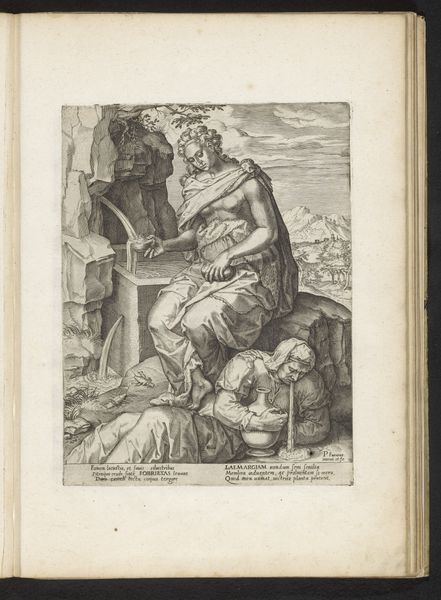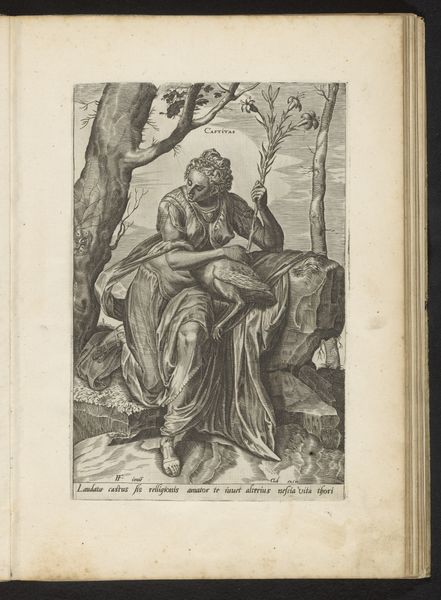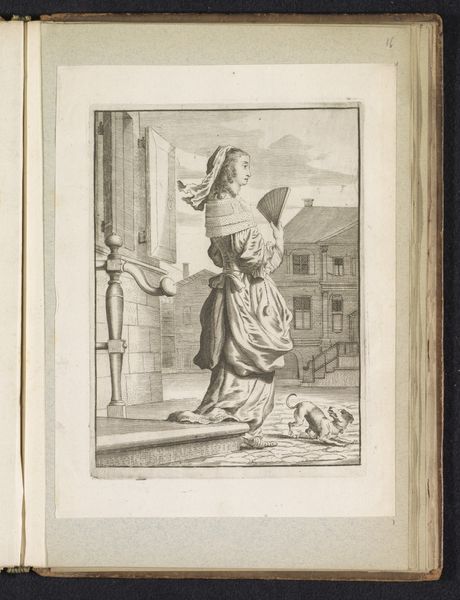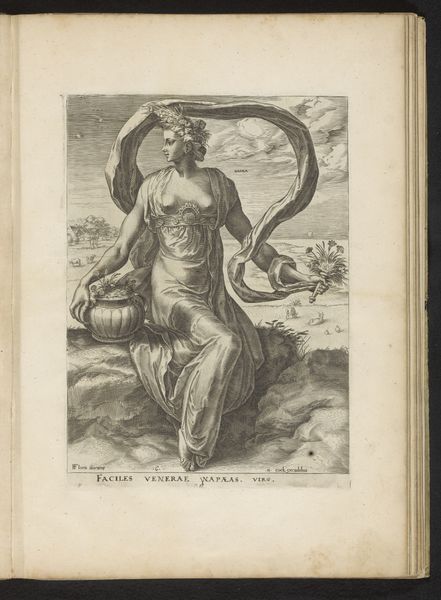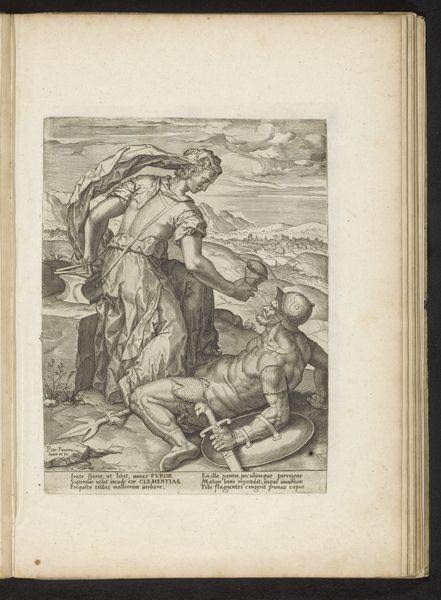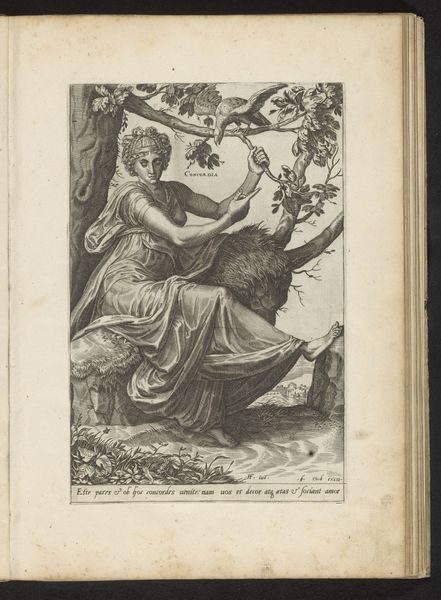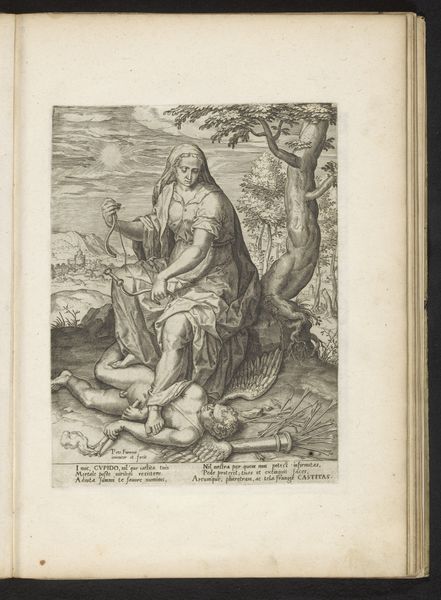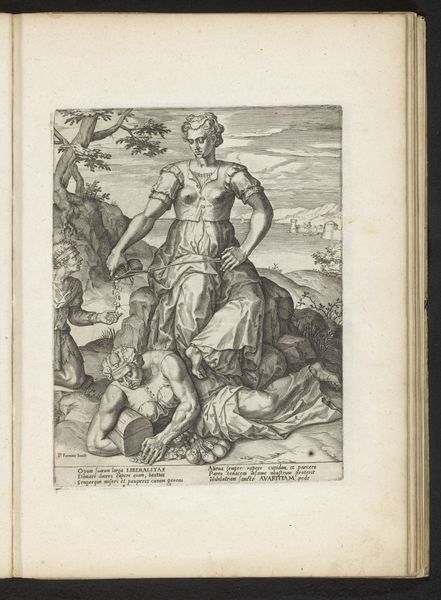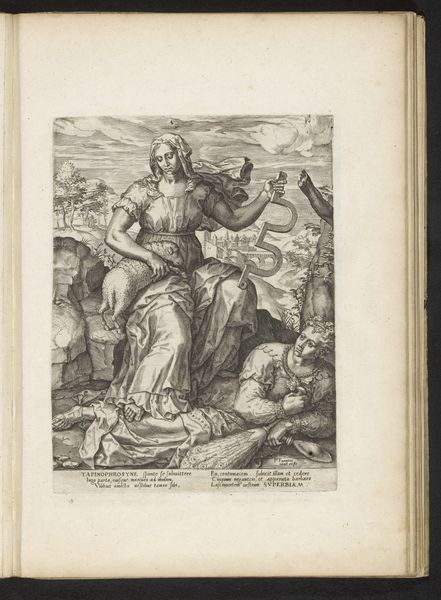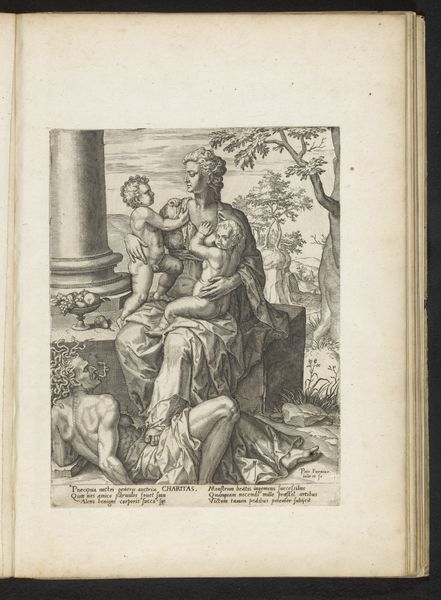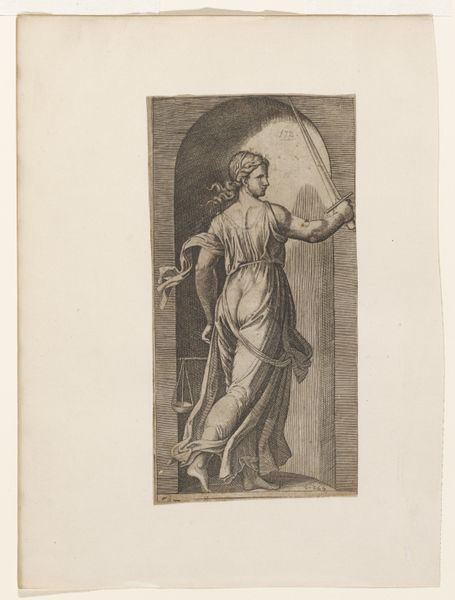
print, engraving
#
portrait
#
allegory
#
ink paper printed
# print
#
classical-realism
#
figuration
#
history-painting
#
italian-renaissance
#
engraving
Dimensions: height 282 mm, width 182 mm
Copyright: Rijks Museum: Open Domain
Editor: This engraving, "Geheugen" or "Memory", made in 1560 by Cornelis Cort, portrays a seated woman writing. She seems serene, almost melancholic. There’s a dog at her feet, and an interesting landscape in the background. What do you see in this piece from a historical perspective? Curator: Beyond the immediately apparent iconography – the classical architecture, the figure embodying Memory, even the faithful dog, a typical emblem of fidelity and remembrance – I’m struck by the political function of such an image in 16th century print culture. Prints like these circulated widely. Consider where it might have hung, and for whom it was made. Editor: A member of the elite, I suppose, with classical education? Someone invested in displaying their virtue and learning? Curator: Precisely! These allegories reinforced social hierarchies, associating virtue, wisdom, and, critically, memory, with specific groups. Notice the Latin inscription – accessible only to the educated elite – reinforcing this exclusivity. Furthermore, how does the idealization of Memory serve the powerful? Editor: It lends legitimacy? Suggests a grounding in tradition, perhaps justifying their actions? Curator: Exactly. This wasn’t simply art for art’s sake. The circulation of such imagery contributed to a cultural climate that reinforced existing power structures, cloaking it in the guise of timeless wisdom. How does recognizing this shift our understanding? Editor: I see it as less innocent, more deliberately constructed. I hadn’t considered the role of the Latin inscription in limiting who had access to the message. Curator: Indeed. Considering art's place in these networks of power reveals deeper layers of meaning, I think. Editor: Absolutely. Thinking about it that way gives the piece more nuance and more meaning to consider. Thank you!
Comments
No comments
Be the first to comment and join the conversation on the ultimate creative platform.

